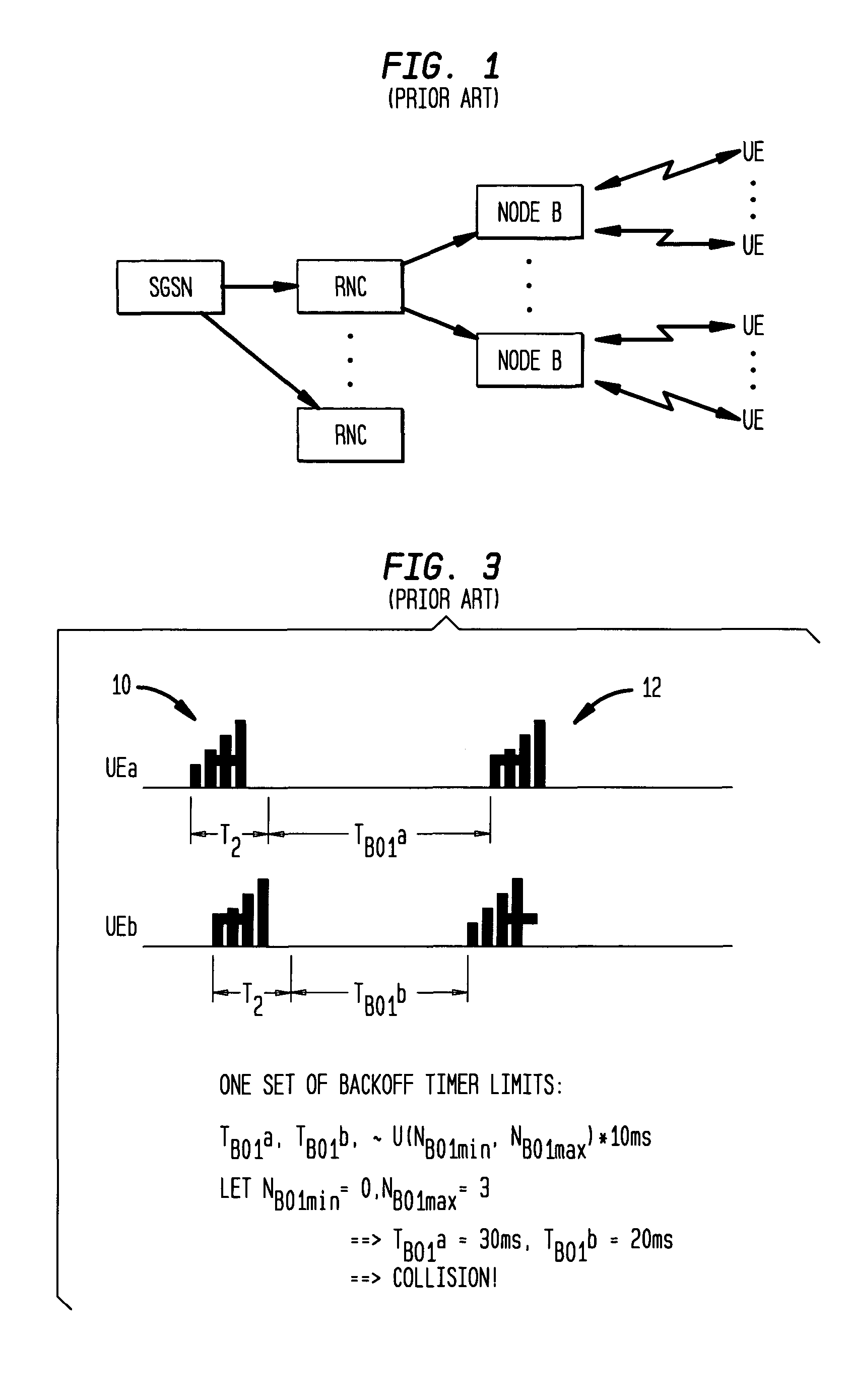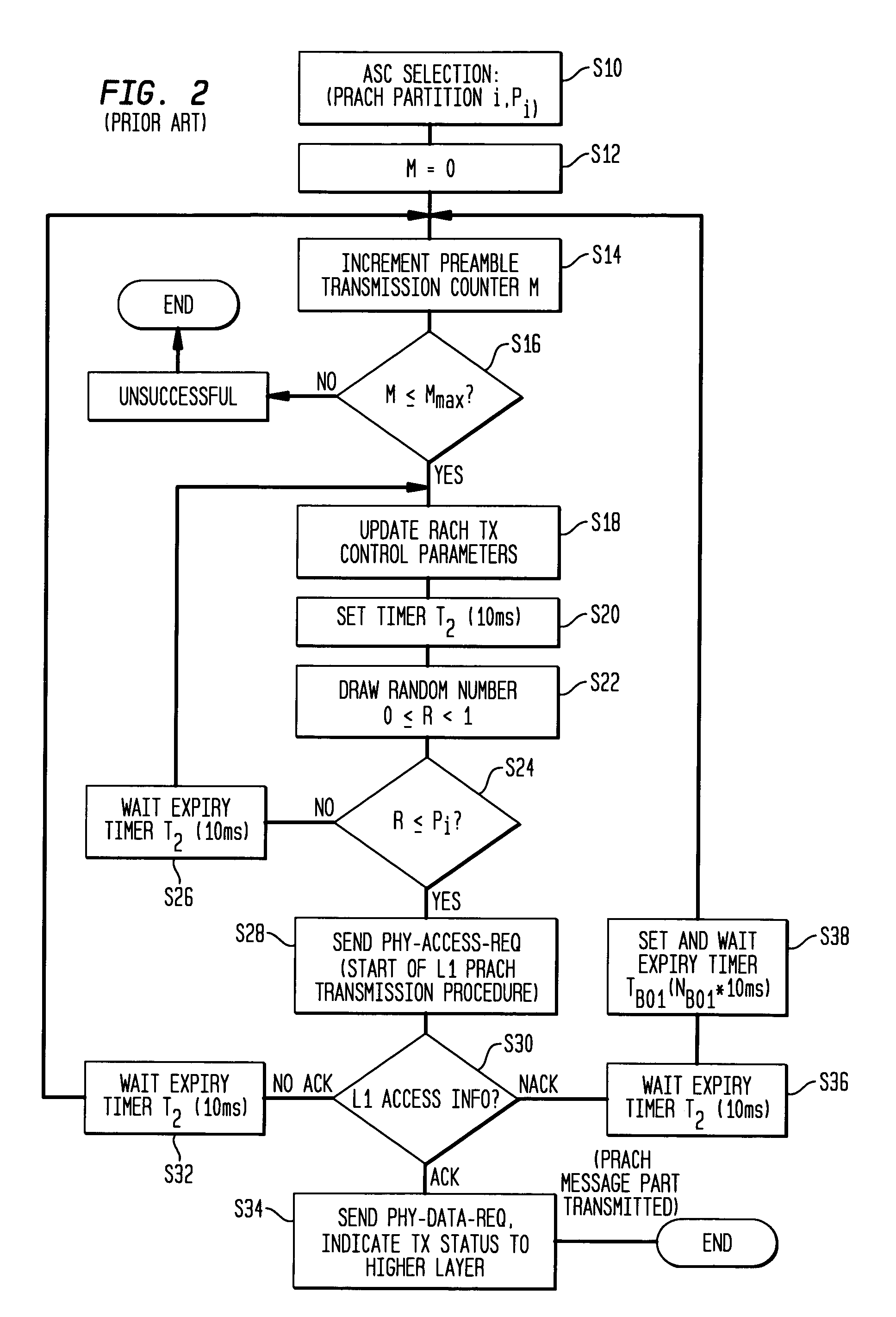Dynamic access priority scheme
a priority scheme and dynamic access technology, applied in the field of dynamic access priority scheme, can solve the problems of large collisions on the rach channel, network will see a surge in rach contention messages, and highly likely future collisions, and achieve the effect of lessening the impact of mbms on the rach
- Summary
- Abstract
- Description
- Claims
- Application Information
AI Technical Summary
Benefits of technology
Problems solved by technology
Method used
Image
Examples
first embodiment
[0017]As discussed above, a UE decides whether to attempt transmission based on a RACH control parameter called a persistence value (transmission probability). According to the present invention, different persistence values are assigned to different ASCs. For example, higher priority ASCs are assigned larger persistence values. A larger persistence value improves the probability that transmission by a UE of that class occurs. Consequently, higher priority ASC UEs are more likely to attempt transmission than lower priority ASC UEs.
[0018]When a collision occurs (e.g., the UE receives a Non-ACKnowledgement signal from the network), the UE attempts to retransmit after a back off interval (step S38 in FIG. 2). The back off interval TBO1 is set equal to 10 ms times a back off value NBO1 randomly chosen between the maximum back off value NBO1max and the minimum back off value NBO1min. According to one embodiment of the present invention, different NBO1max values and / or NBO1min values are ...
second embodiment
[0023]In addition to, or independent of, the above described embodiments, in the present invention a different PRACH is allocated for a particular MBMS service, a group of MBMS services, or any MBMS service to prevent MBMS service related activities from impacting existing RACH related activities. Namely, the network assigns a PRACH to the UEs associated with a particular MBMS service, a group of MBMS services, or any MBMS service. In one version of this embodiment, the PRACH assigned is exclusively used for MBMS traffic; but the invention is not limited to this exclusivity.
[0024]As an additional aspect of this embodiment, the NBO1max for UEs assigned the MBMS PRACH is set larger than the NBO1max for one or more non-MBMS PRACHs to allow for more spread between different UEs trying to access the PRACH for MBMS service(s). When used with the conventional methodology of FIG. 2, the network associates one NBO1max with each PRACH as described with respect to FIG. 2. However, when this se...
PUM
 Login to View More
Login to View More Abstract
Description
Claims
Application Information
 Login to View More
Login to View More - R&D
- Intellectual Property
- Life Sciences
- Materials
- Tech Scout
- Unparalleled Data Quality
- Higher Quality Content
- 60% Fewer Hallucinations
Browse by: Latest US Patents, China's latest patents, Technical Efficacy Thesaurus, Application Domain, Technology Topic, Popular Technical Reports.
© 2025 PatSnap. All rights reserved.Legal|Privacy policy|Modern Slavery Act Transparency Statement|Sitemap|About US| Contact US: help@patsnap.com



